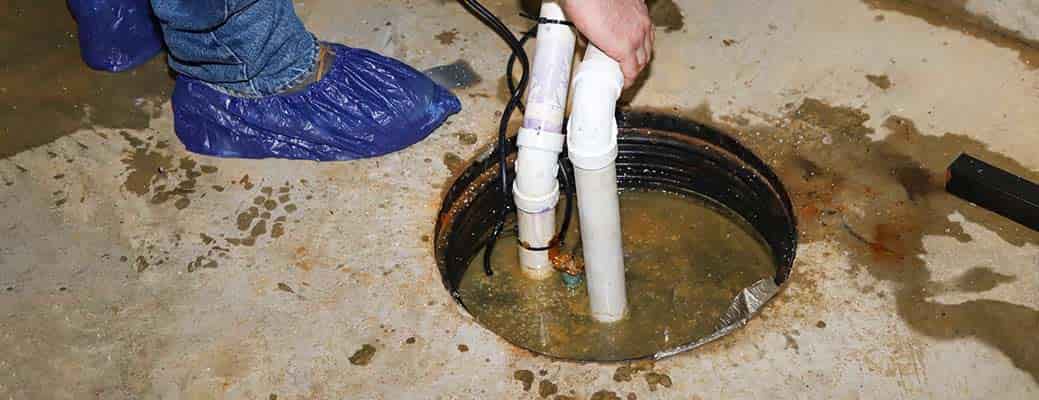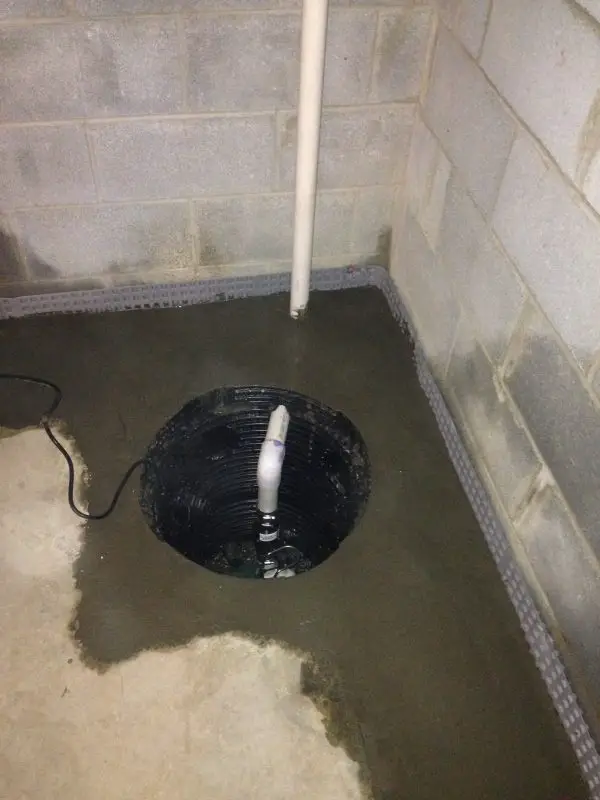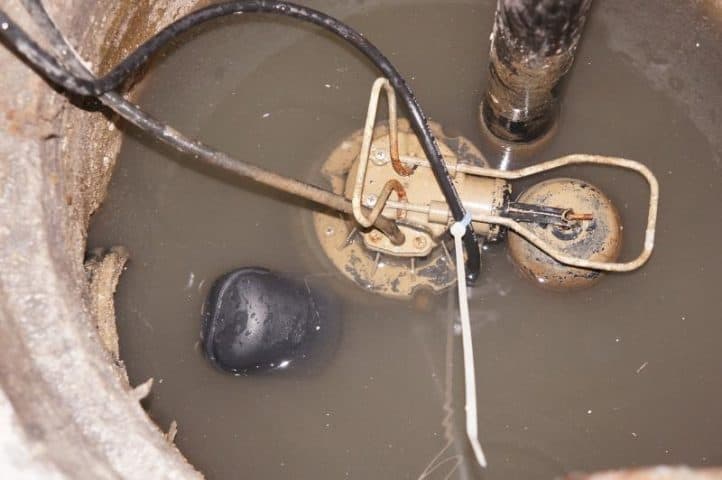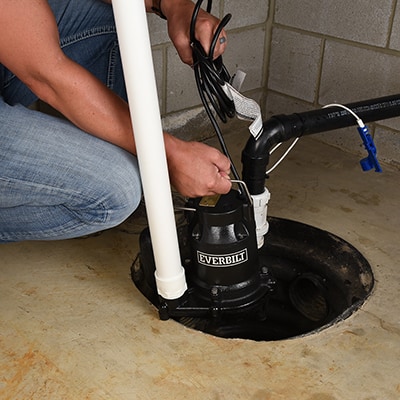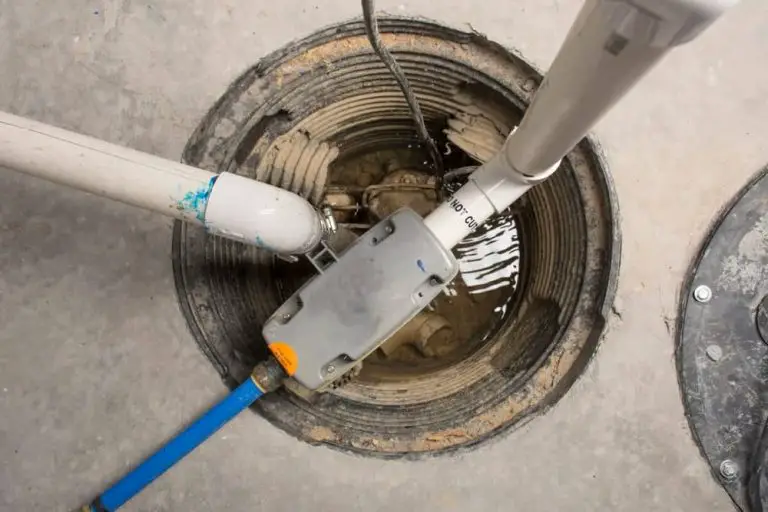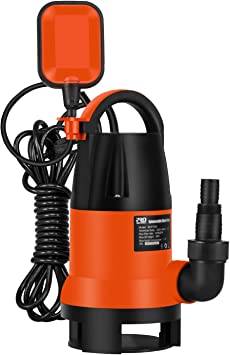What Happens If Sump Pump Fails
A sump pump is a device that helps remove water from your home. It is typically used in basements or crawl spaces to prevent flooding.
If the sump pump fails, water can start to build up and cause serious damage to your home. In some cases, the water can even reach high enough to come into your living space.
This can be a very dangerous situation, so it is important to know what to do if your sump pump fails. If your sump pump fails, it could lead to a number of problems in your home.
For one, if you have a basement, the water level in the basement can rise quickly and cause flooding. This can damage any belongings you have stored in the basement, as well as create an ideal environment for mold growth.
Additionally, the excess water can put pressure on your foundation, which can lead to cracks or even collapse. If you have a crawl space, failing sump pump can cause that area to fill with water as well, leading to similar issues. In short, it’s important to make sure your sump pump is in good working condition and to know what to do if it does fail so you can avoid serious damage to your home.
What Happens when the Sump Pump Fails
Can You Shower If Your Sump Pump is Not Working
If your sump pump is not working, you may be able to take a shower, but it is not recommended. Without a sump pump, your home is at risk for flooding and water damage.
If you do decide to take a shower, be sure to monitor the water level in the sump pit and stop if it begins to rise. It’s also a good idea to have someone else in the house in case of an emergency.
What to Do If Sump Pump Fails
If your sump pump fails, don’t panic! There are a few things you can do to minimize the damage. First, if you have a backup sump pump, make sure it is working properly.
If not, you may need to replace it. Second, if your primary sump pump fails, you can try to manually remove the water from your basement using a wet/dry vacuum or a submersible pump.
Be sure to wear proper safety gear, including gloves and eye protection, when doing this. Third, if there is significant water damage in your basement, you may need to call in a professional cleanup crew.
In this case, it is important to document the damage with photos and videos so that you can make an insurance claim. fourth , once the water has been removed from your basement , take measures to prevent future flooding , such as installing a backflow valve or French drain. This will help keep your basement dry even if your sump pump fails again in the future .
Sump Pump Not Working Basement Flooded
If your sump pump is not working, your basement could flood. A sump pump is a pump that is used to remove water that has accumulated in a water-collecting sump pit.
The water is typically pumped out of the pit and away from the building to a safe location. If your sump pump fails or isn’t working properly, water can quickly build up in the pit and cause flooding.
There are several things that can cause a sump pump to fail. For example, if there is a power outage, the pump will not be able to operate.
Additionally, if the pit becomes clogged with debris, the pump may not be able to work properly. If you suspect that your sump pump has failed, it’s important to take action right away to prevent flooding.
If you have a flooded basement, there are several steps you should take to mitigate the damage and protect your home: 1) Remove any standing water: This should be done as soon as possible to prevent further damage from occurring. You can use a wet/dry vacuum or mop and bucket to remove the water.
2) Assess the damage: Once all of the water has been removed, take a look at what was damaged by the floodwater. Any items that were soaked will need to be cleaned and disinfected or thrown away.
Carpets and drywall may also need to be replaced depending on the extent of the damage. 3) Prevent mold growth: Mold can start growing within 24-48 hours after flooding occurs so it’s important to act quickly! Begin by opening windows and doors for ventilation then use fans and dehumidifiers to help dry out wet areas completely (make sure you keep an eye on moldy areas as they can spread quickly). Finally, clean all affected surfaces with warm water and soap before disinfecting with bleach solution (1 cup bleach per gallon of water).
How Long Does It Take for a Sump Pump to Overflow
If your sump pump is working properly, it should never overflow. However, if there is a problem with your pump or the system that it’s connected to, it’s possible for an overflow to occur.
Here’s what you need to know about how long it takes for a sump pump to overflow and what you can do to prevent this from happening. How long does it take for a sump pump to overflow? It depends on the capacity of your sump pit and the rate at which water is entering the pit.
If you have a small pit and/or a lot of water coming in, it could take only minutes for the pit to fill up and cause an overflow. In most cases though, you’ll have some warning before an overflow occurs as the water level in the pit will rise slowly over time.
What causes a sump pump to overflow? There are several potential causes of a sump pump overflowing. One common cause is simply having too much water entering the pit faster than the pump can remove it.
This can be due to heavy rains or snowmelt causing groundwater levels to rise quickly. Another possibility is that something is blocking the discharge pipe that carries water away from the pit after it’s been pumped out.
This could be caused by debris such as sticks or leaves, or even ice in cold weather conditions. Finally, if there’s a problem with the actual sump pump itself – such as if it gets overloaded or overheated – this can also cause an overflow. What can you do to prevent a sump pump from overflowing?
Manually Empty Sump Pump
Most sump pumps are designed to be automatic, meaning they will turn on and off as needed to keep your basement or crawl space dry. However, there may be times when you need to manually empty your sump pump.
This can be due to a power outage, clogged pipes, or simply because the pump isn’t working properly. If you need to manually empty your sump pump, the first thing you’ll want to do is locate the discharge pipe.
This is the pipe that carries water away from your sump pit. Once you’ve located the discharge pipe, use a garden hose or bucket to siphon water out of the pit and away from your home.
It’s important to note that you should only manually empty your sump pump when absolutely necessary. If you find yourself doing it frequently, there may be an issue with your pump that needs to be addressed by a professional.
How to Drain Sump Pump Without Electricity
If you live in an area that is prone to flooding, you know how important it is to have a sump pump. But what do you do when the power goes out and your sump pump can’t operate? Here are some tips on how to drain your sump pump without electricity.
First, if possible, try to use a generator to power your sump pump. If you don’t have a generator, or if the power is out for an extended period of time, you’ll need to manually drain your sump pump.
This can be done by disconnecting the hose from the outlet and draining the water into a bucket. Be sure to empty the bucket often so it doesn’t overflow.
If there is still water left in the sump pit after you’ve drained it as much as possible, you can try using a bilge pump. Bilge pumps are designed for boats but they can also be used to remove water from a small space like a sump pit.
Just be sure not to overdo it or you could damage your bilge pump. Finally, if all else fails and you’re dealing with a lot of water, you may need to call in professional help. A plumber or other professional will likely have the tools and experience necessary to safely and effectively remove any remaining water from your home.
Why is My Sump Pump Pit Dry
If your sump pump pit is dry, there are a few possible explanations. First, the most likely explanation is that the pump isn’t working properly.
This could be because the float switch is stuck or there’s something blocking the impeller. If you suspect this is the case, you should call a plumber to come and take a look.
Another possibility is that your pit is too small. The pit should be large enough to hold all of the water that will accumulate during a heavy rainstorm.
If it’s not, then the water will overflow and won’t be pumped out properly. You can solve this problem by enlarging the pit or by installing a second sump pump.
Finally, it’s also possible that your ground around the house isn’t draining properly. This could be because of an issue with your gutters or downspouts, or it could be due to poor grading around your foundation. If you think this might be the problem, you should call in a landscaper or foundation specialist to take a look and make recommendations for fixing the issue.
Why is My Sump Pump Running So Much
If your sump pump is running more than it used to, there could be a few reasons why. First, check to see if the water level in your sump pit is higher than normal.
If so, this could mean that the pump is working harder to keep up with the water inflow. Additionally, take a look at the discharge pipe to see if it’s blocked or kinked in any way – this could also lead to the pump working overtime.
If neither of these seem to be the issue, then it’s possible that the float switch on your sump pump is stuck in the “on” position. This can happen if dirt and debris build up around the switch, preventing it from moving freely.
Clearing away any obstructions should fix the problem. If your sump pump continues to run excessively after checking all of these things, then it’s best to call a professional for help. There may be an issue with the pump itself that needs to be addressed.
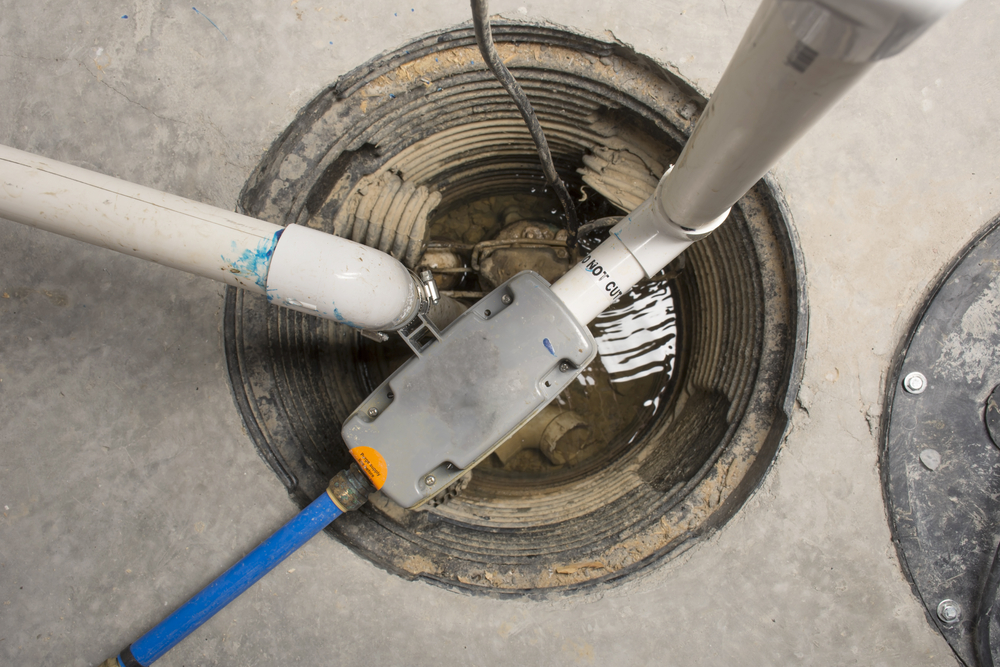
Credit: www.restoration1.com
What is the Most Common Reason for Sump Pump Failure?
Most sump pumps fail due to a lack of maintenance. Without regular cleaning and servicing, the pump will eventually become clogged with debris or rust, and will no longer be able to function properly. In addition, the float switch which turns the pump on and off can become stuck in the “on” position, causing the pump to run continuously and quickly wear out.
What are Signs of Sump Pump Failure?
If your sump pump has failed, there are a few signs to look for: – Water in the sump pit: This is the most obvious sign that something is wrong. If you see water in the pit when the pump isn’t running, it means that it’s not able to keep up with the water coming in and is likely failing.
– Grinding or loud noises: These can be signs that the impeller (the part of the pump that moves the water) is damaged or obstructed. If you hear these noises, it’s important to check on your pump right away.
– Slow draining: If it takes longer than usual for your sump pit to drain after a rainstorm or other event, it could be a sign of a clog somewhere in the system. This can eventually lead to failure if not addressed.
What Happens When a Sump Pump Dies?
If your sump pump dies, water will begin to backup in your basement. This can lead to flooding and serious damage to your home.
It is important to have a backup plan in place in case your sump pump fails. You should consider installing a battery operated backup sump pump or a water powered backup sump pump. These pumps will kick in if your primary sump pump fails and help to prevent basement flooding.
Can You Use Water If Sump Pump is Not Working?
It’s not advisable to use water if your sump pump is not working. If you have a backup power source, such as a battery, you can use that to power the pump.
Otherwise, you’ll need to wait until the pump is repaired or replaced. In the meantime, be sure to clear any debris from around the pump so that it can operate properly when it’s back up and running.
Conclusion
If your sump pump fails, you could be in for a world of trouble. water will start to build up in your basement or crawlspace, and if it’s not dealt with quickly, it can lead to serious damage to your home.
mold and mildew will start to grow, and wood rot can set in. If the water level gets high enough, it can even cause your foundation to crack.
In short, a failed sump pump is a very big deal. That’s why it’s so important to have a backup plan in place.
battery-powered backup sump pumps are a great option, as they’ll keep working even if the power goes out. You should also consider investing in a water-powered backup sump pump, which will kick in if your primary pump fails. And finally, make sure you know how to use your sump pump! It may seem like an obvious step, but you’d be surprised how many people don’t know how to properly operate their pumps.

